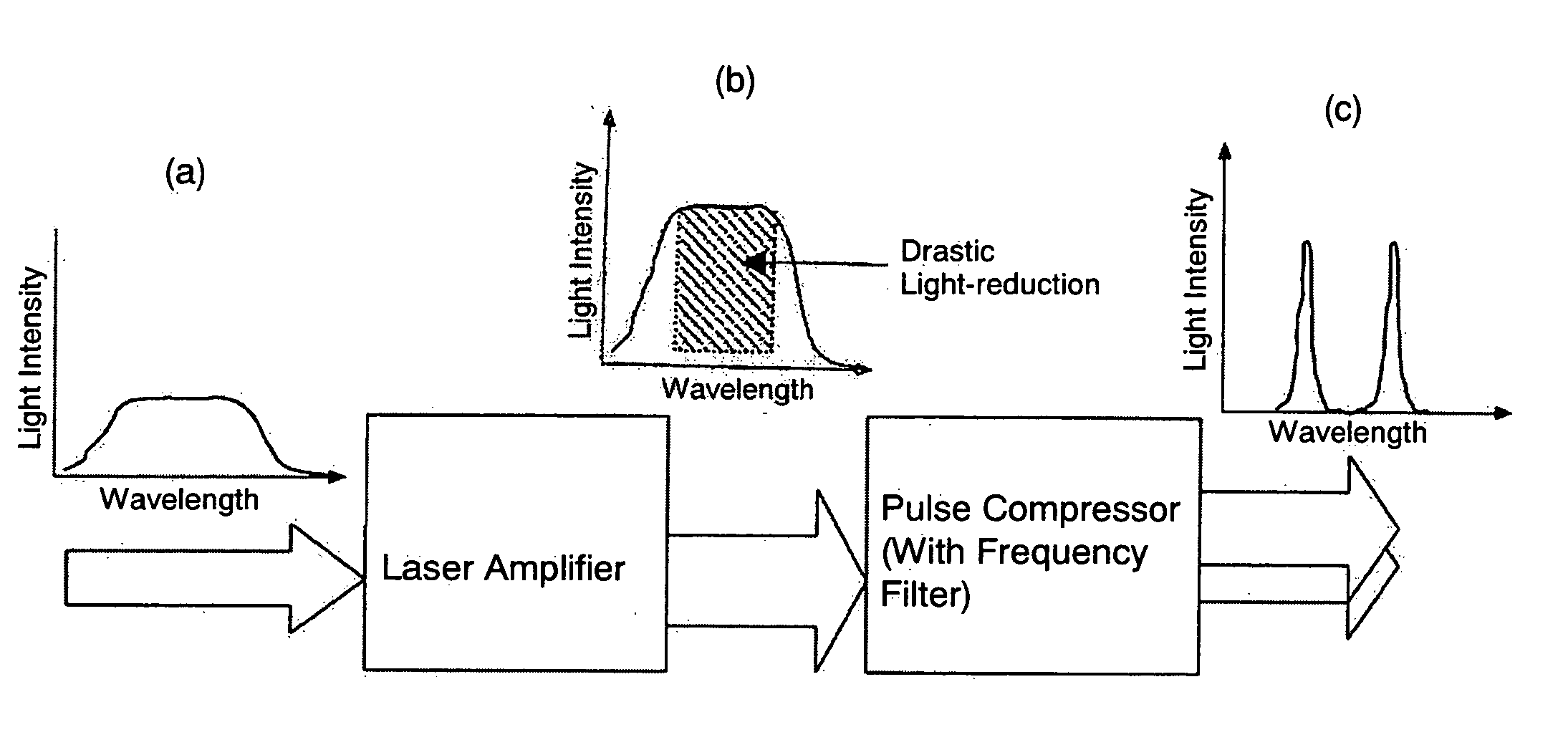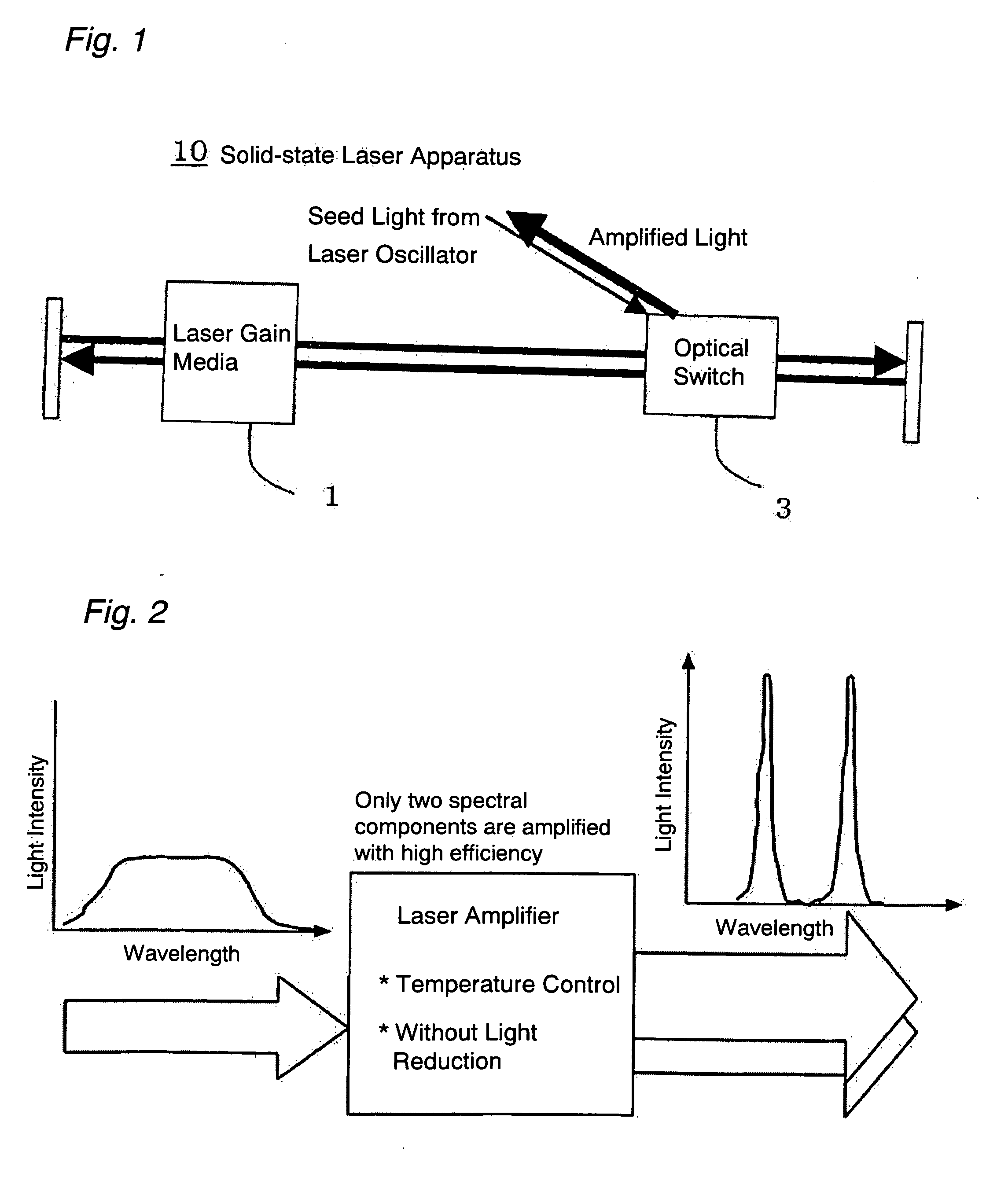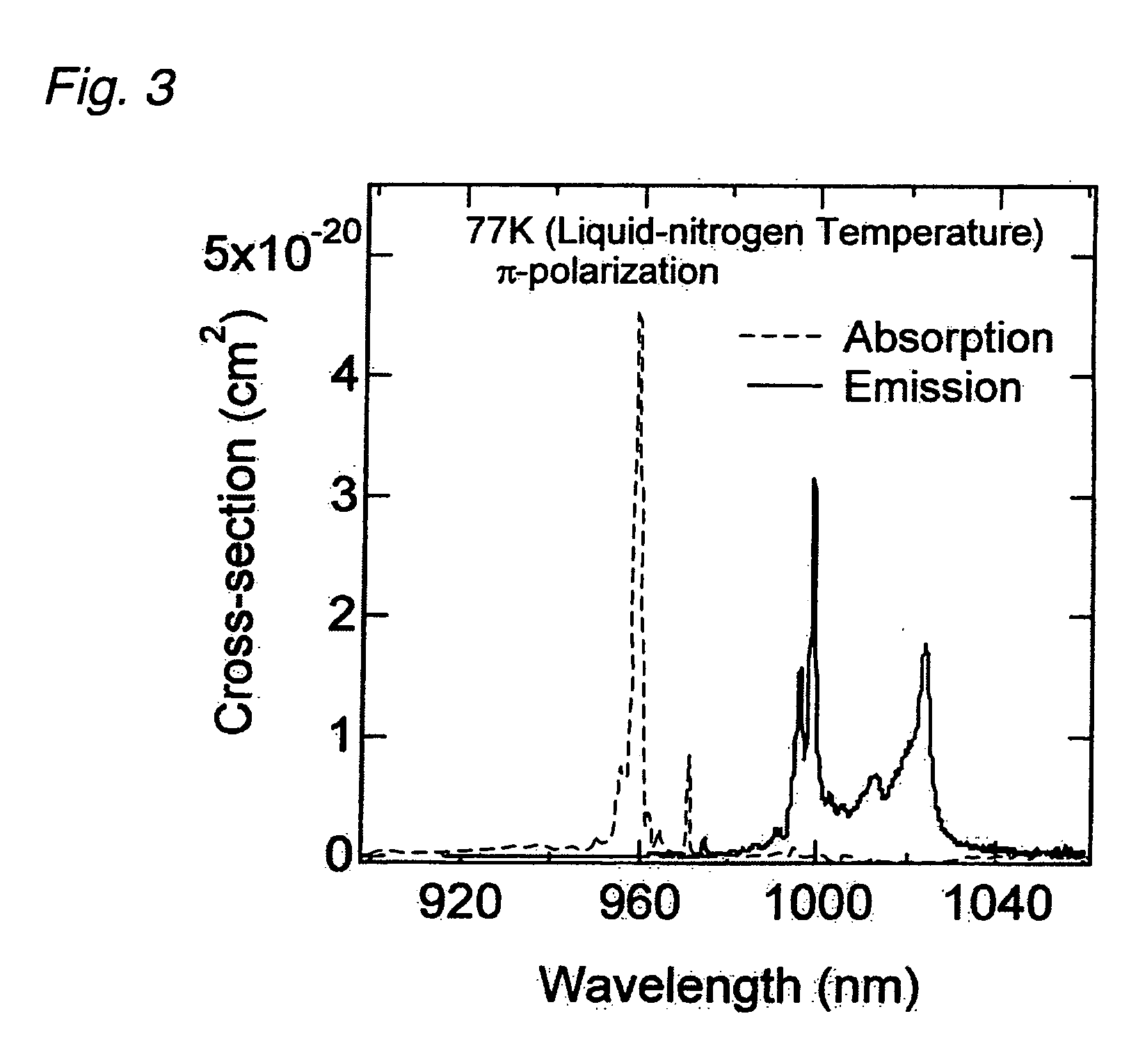Solid-state laser apparatus
a laser apparatus and solid-state technology, applied in the direction of laser cooling arrangements, electrical devices, laser details, etc., can solve the problems that the production of short-pulse terahertz waves with high efficiency cannot be expected, and the gain of the apparatus as a solid-state laser apparatus is low, and achieves high efficiency and large emission (fluorescence) cross-sections
- Summary
- Abstract
- Description
- Claims
- Application Information
AI Technical Summary
Benefits of technology
Problems solved by technology
Method used
Image
Examples
example 1
[0036]Ytterbium-20%-doped lutetium lithium tetrafluoride (Yb:LuLiF4) crystal was cooled at the liquid-nitrogen temperature (77K). As shown in FIG. 3, it was found that the emission (fluorescence) cross-sections of the Yb:LuLiF4 crystal at two wavelengths of 999 nm and 1024 nm increase 10 times and 4 times respectively with πpolarization at the liquid-nitrogen temperature. Thus, it was also found that the Yb:LuLiF4 crystal is one of crystals that are preferable as the laser gain media 1 of the solid-state laser apparatus 10 shown in FIG. 1.
example 2
[0037]A laser pulse from a mode locked oscillator (central wavelength: 999 nm or 1024 nm (variable); bandwidth: 15 nm; pulse duration: 100 fs) was frequency-chirped up to 1.2 ns by means of an optical fiber. The frequency-chirped laser pulse was input as seed light into the solid-state laser apparatus 10 shown in FIG. 1, and was amplified with the π polarization direction by using ytterbium-20%-doped lutetium lithium tetrafluoride (Yb:LuLiF4) crystal cooled at the liquid-nitrogen temperature (77K) as the laser gain media 1. In the first experiment in which a wavelength of the seed light was set to 999 nm, amplification at 999 nm wavelength was observed and the maximum output energy of 6 mJ was obtained. While the light was amplified, the duration of the amplified laser pulse was compressed by gain-narrowing in accordance with the gain characteristic of the amplification media, and the duration of the amplified laser pulse was measured to be 13.2 ps. When the central wavelength of th...
example 3
[0038]In the solid-state laser apparatus 10 shown in FIG. 1, a Q-switch laser operation was experimentally carried out without injecting seed light from an oscillator.
[0039]When the pump intensity of the LD on the laser gain media 1 was set to be equal to or greater than 6.9 kW / cm2, which is a nearly medium value in the foregoing second example, it was observed that two spectral components of 999 nm and 1024 nm were simultaneously amplified. In view of this fact, it is understood that two-color short pulses are simultaneously amplified when a frequency-chirped laser light from a laser oscillator that has a broad bandwidth including two wavelengths of 999 nm and 1024 nm is used as seed light. Further, when two-color intense laser pulses of 999 nm and 1024 nm wavelengths are overlapped in nonlinear crystal while adjusting the timings thereof, far-infrared light pulses (terahertz waves) are generated. The wavelength of the terahertz waves does not depend on the type of the crystal and ...
PUM
 Login to View More
Login to View More Abstract
Description
Claims
Application Information
 Login to View More
Login to View More - R&D
- Intellectual Property
- Life Sciences
- Materials
- Tech Scout
- Unparalleled Data Quality
- Higher Quality Content
- 60% Fewer Hallucinations
Browse by: Latest US Patents, China's latest patents, Technical Efficacy Thesaurus, Application Domain, Technology Topic, Popular Technical Reports.
© 2025 PatSnap. All rights reserved.Legal|Privacy policy|Modern Slavery Act Transparency Statement|Sitemap|About US| Contact US: help@patsnap.com



